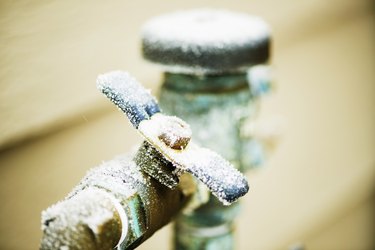The article down below relating to Prevent Frozen Pipes is totally remarkable. Read on and draw your own results.

Winter can wreak havoc on your plumbing, specifically by freezing pipelines. Below's exactly how to avoid it from taking place and what to do if it does.
Intro
As temperature levels drop, the danger of frozen pipelines boosts, potentially causing pricey repairs and water damage. Comprehending exactly how to stop icy pipelines is important for house owners in cool climates.
Avoidance Tips
Shielding vulnerable pipes
Cover pipes in insulation sleeves or utilize warm tape to secure them from freezing temperature levels. Focus on pipelines in unheated or exterior areas of the home.
Heating techniques
Keep indoor areas sufficiently heated, especially locations with plumbing. Open up cabinet doors to permit warm air to distribute around pipes under sinks.
How to determine frozen pipes
Look for decreased water circulation from faucets, unusual odors or noises from pipelines, and noticeable frost on subjected pipelines.
Long-Term Solutions
Structural changes
Think about rerouting pipes away from exterior wall surfaces or unheated areas. Add added insulation to attic rooms, cellars, and crawl spaces.
Upgrading insulation
Invest in top quality insulation for pipes, attics, and wall surfaces. Correct insulation aids keep regular temperature levels and reduces the danger of frozen pipes.
Safeguarding Outside Plumbing
Garden hose pipes and outside faucets
Separate and drain garden tubes before winter season. Install frost-proof faucets or cover outdoor taps with shielded caps.
Comprehending Frozen Pipelines
What triggers pipelines to freeze?
Pipelines freeze when exposed to temperature levels below 32 ° F (0 ° C) for expanded periods. As water inside the pipes freezes, it increases, putting pressure on the pipeline walls and possibly causing them to rupture.
Dangers and problems
Frozen pipes can bring about supply of water disturbances, property damages, and costly repairs. Burst pipes can flooding homes and cause extensive structural damages.
Signs of Frozen Pipeline
Recognizing frozen pipes early can avoid them from breaking.
What to Do If Your Pipes Freeze
Immediate actions to take
If you think frozen pipes, maintain taps available to soothe stress as the ice melts. Use a hairdryer or towels taken in hot water to thaw pipelines slowly.
Conclusion
Preventing icy pipelines requires positive actions and quick feedbacks. By comprehending the causes, signs, and preventive measures, home owners can protect their plumbing during winter.
5 Ways to Prevent Frozen Pipes
Drain Outdoor Faucets and Disconnect Hoses
First, close the shut-off valve that controls the flow of water in the pipe to your outdoor faucet. Then, head outside to disconnect and drain your hose and open the outdoor faucet to allow the water to completely drain out of the line. Turn off the faucet when done. Finally, head back to the shut-off valve and drain the remaining water inside the pipe into a bucket or container. Additionally, if you have a home irrigation system, you should consider hiring an expert to clear the system of water each year.
Insulate Pipes
One of the best and most cost-effective methods for preventing frozen water pipes is to wrap your pipes with insulation. This is especially important for areas in your home that aren’t exposed to heat, such as an attic. We suggest using foam sleeves, which can typically be found at your local hardware store.
Keep Heat Running at 65
Your pipes are located inside your walls, and the temperature there is much colder than the rest of the house. To prevent your pipes from freezing, The Insurance Information Institute suggests that you keep your home heated to at least 65 degrees, even when traveling. You may want to invest in smart devices that can keep an eye on the temperature in your home while you’re away.
Leave Water Dripping
Moving water — even a small trickle — can prevent ice from forming inside your pipes. When freezing temps are imminent, start a drip of water from all faucets that serve exposed pipes. Leaving a few faucets running will also help relieve pressure inside the pipes and help prevent a rupture if the water inside freezes.
Open Cupboard Doors
Warm your kitchen and bathroom pipes by opening cupboards and vanities. You should also leave your interior doors ajar to help warm air circulate evenly throughout your home.

As a devoted person who reads about 6 Ways to Prevent Frozen Pipes, I thought sharing that excerpt was a great idea. Are you aware of another person who is interested in the subject? Please feel free to share it. Kudos for your time. Please pay a visit to our site back soon.
Set Up An Appointment